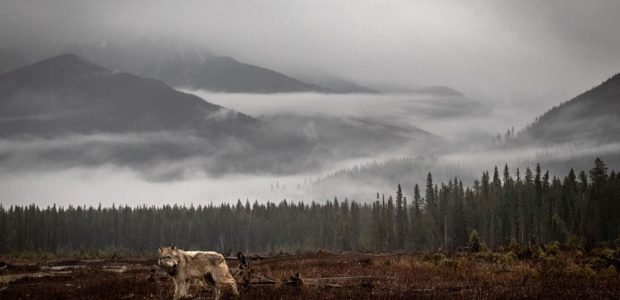How I got into rangefinders
There was a point several years ago when I was very much into analog photography. One of the main reasons I was attracted to film was the possibility of using a variety of small, quirky old cameras that engaged me in a totally different way to my large, clunky DSLR. I was lucky to find a few gems in flea markets around town, such as the venerable Olympus 35 RC, the Olympus XA or the Rollei 35. Even if it was for a relatively short period, I was in love – silent, unconspicuous and portable, these cameras instantly hit a sweet sport for me, with their idiosyncratic operation and unique, special way of rendering what was in front of the lens. They could spark imagination in a way my “modern” cameras could not even dream of in their plastic guts. But, they were outdated, unreliable and limited in many ways.
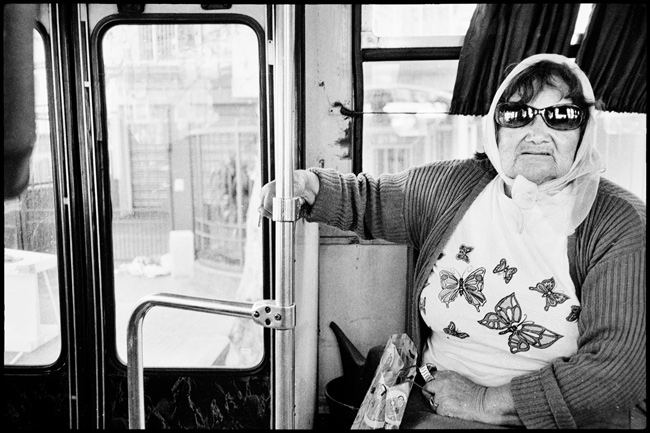
“Mama Call” – Montevideo, Uruguay – November 2009 (Olympus XA)
After a while, I found myself wanting a more serious instrument that could offer a similar, engaging and minimalistic experience. I settled for a Voigtlander Bessa R3A rangefinder with a Nokton 50mm f/1.5 LTM. That camera meant business. It had a bright 1:1 viewfinder, a proper meter, it supported M-mount lenses. I had a blast with it for a while, but, the timing was not right. Soon after I got it I embarked into a years long photography project that took me out to rural areas of my country shooting horse races. It was not the right tool for that project, where I would be out shooting under extreme conditions, such as rain, mud, driving on dusty roads for hundreds of kilometers. I needed the ruggedness, general operational speed, and convenience of my Canon 7D DSLR. So, I just never got to bond with the Bessa. I got some beautiful pictures with it, loved the mighty Nokton for its smooth buttery bokeh and character, but, in the end, i just could not afford having it sitting on my closet unused.
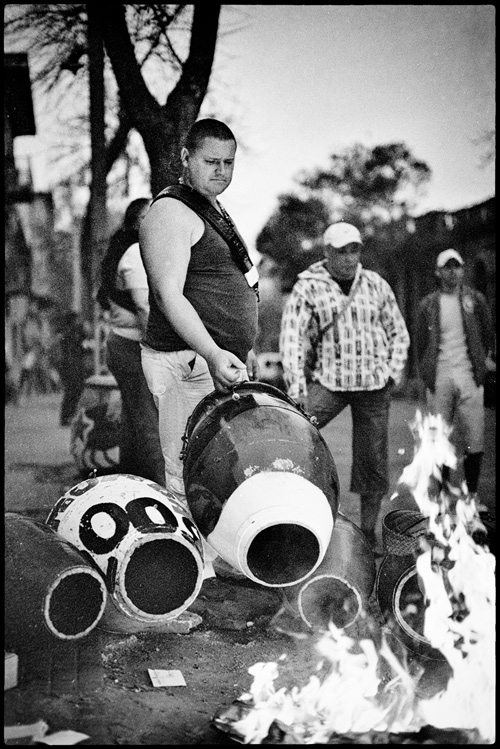
“Drums” – Montevideo, Uruguay – October 2009 (Voigtlander Bessa R3A, Nokton 50mm 1.5)
First Impressions on the Leica M8
Several years went by, and I still regarded that short, torrid affair with rangefinders and compact cameras as one of the most exciting and fun periods in my personal photography. I was finding less and less attractive shooting with big sized cameras for my personal projects. So, finally, in 2013, my finances allowed me to fulfill a years long dream: I was able to get my hands on a barely used Leica M8 with a Summicron 35mm f/2 ASPH.

“Montevideo Rasta” – Montevideo, Uruguay – October 2013 (Leica M8, Summicron 35mm ASPH)
What I first noticed when holding the camera was how hefty it was, heavier than I ever expected, certainly heavier than any of the comparable cameras I had held before. It was compact, but not small by today’s standards. The build quality was absolutely solid, in a good, reasurring way. The shutter speed dial and all buttons click with a positive response. The mode dial is way too loose, which is perplexing on a camera with such a focus on haptics. The optional grip is, in my opinion, a must have – It dramatically improves the handling of the camera, which is otherwise uncomfortable to handhold for extended periods of time. The viewfinder is bright and clear, and, as I have more and more experience with the camera, it proves to be one of the main differences with anything else currently on the market. More on this later.
The Summicron 35mm ASPH feels great, and has just the right balance between size, weight, and tactile feeling. The lens focus ring is silky smooth, the aperture ring has clear detents every half a stop. This lens alone justifies for me everything I had read about the build quality of Leica optics and craftmanship.
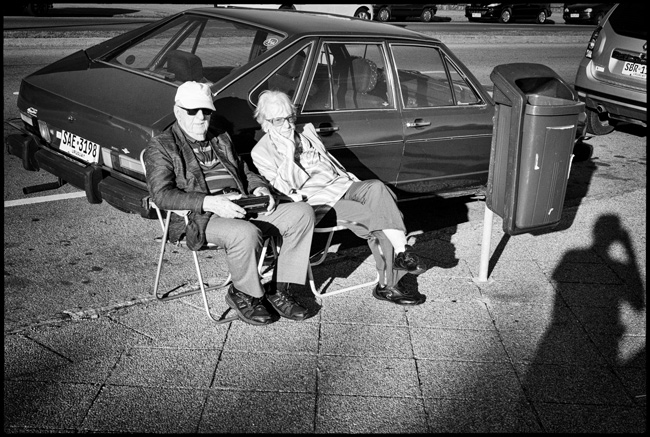
“Killing Time” – Montevideo, Uruguay – October 2013 (Leica M8, Summicron 35mm ASPH)
Rediscovering the craft of photography
My first outings with the camera were an exercise in frustration. Even though I have a solid background on photographic theory and technique, somehow the convenience of automation, matrix metering, live view, and astronomic high iso performance had made me a lazy photographer. I found myself losing shots because of mis-focusing, having set the wrong shutter speed, or due to inaccurate framing. I felt clunky with the camera in the streets. It was, by far, the most demanding camera i had ever used. The learning curve proved to be steep.

“Untitled” – Montevideo, Uruguay – September 2013 (Leica M8, Summicron 35mm ASPH)
But, lo and behold, a newly found confidence began to emerge. I learned to embrace the camera’s idiosyncrasies and accept its limitations. My approach to photography changed in a subtle, yet powerful way. I was no longer “taking” pictures. I was making them. I was in total charge of the image making process, from choosing the aperture, to the shutter speed to the focus distance. I relearned to assess exposure by feel, and under most circumstances I’m able to quickly set ISO, aperture and shutter speed just by looking at the scene in front of me, and be more or less in the ballpark. This has allowed me unexpected freedom – once the camera is set the way I want it to be, I can almost use it like a point and shoot, but with the feeling of a proper, serious tool.
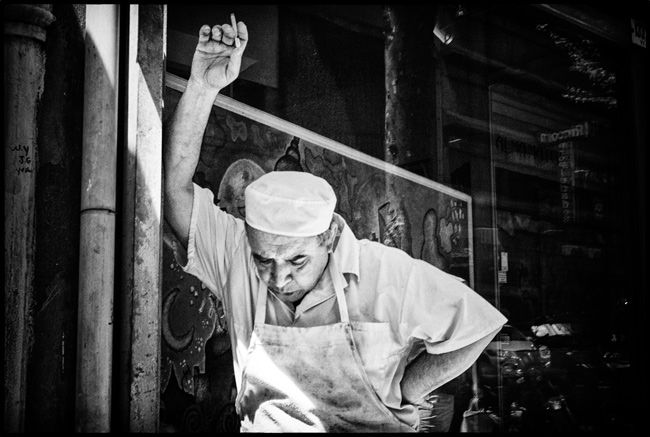
“Smoke Break” – Montevideo, Uruguay – October 2013 (Leica M8, Summicron 35mm ASPH)
Chance and serendipity are now partners in my photographic journey. These are wild partners, mind you. Sometimes they ruin what I thought was a great shot. But sometimes, they greet me with an unexpected image, that I didn’t even imagine. In that sense, shooting the Leica M8 is the closest to shooting a film camera I’ve experienced in a long time. What I see on the viewfinder is, by definition, only an approximation to what the final image will look like. With the LCD screen off, there’s little trace of electronic “stuff” getting in the middle of the photographic experience. I can operate the camera in its entirety with real, mechanical, controls. A quick glance at the camera informs me of aperture, shutter speed and focus. With practice, you learn to count the “clicks” of the dials/rings, and the position of the focusing tab for key distances, thus making adjustments on the fly possible just by feel.
Composing through a direct viewfinder has changed how I approach my subjects too. Whereas a DSLR finder or a mirrorless EVF removes the photographer from the scene, almost like peeping into it, the Leica’s viewfinder conduces to a more natural connection to the environment. There’s something about the direct finder that is difficult to explain in words, but that surfaces after a while shooting exclusively with it. Now, when I grab any other camera, I can instantly feel something’s different, something’s missing.
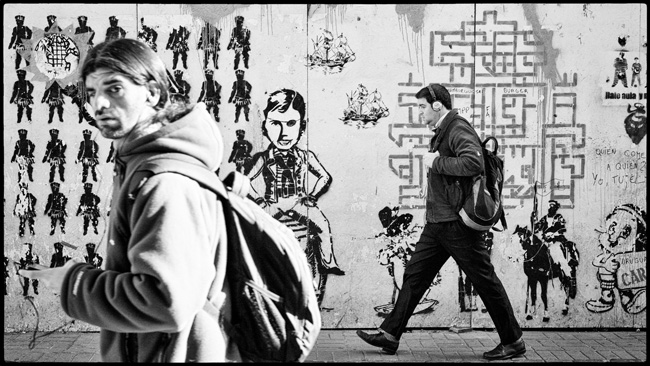
“Eye by Eye” – Montevideo, Uruguay – September 2013 (Leica M8, Summicron 35mm ASPH)
The shutter sound is muted, pretty much a dry “clack” sound. Even though I’ve heard that it is nowhere as silent as other brethrens of the M series, it is certainly soft and discreet enough for street photography. If you are used to a DSLR shutter, the M shutter sound is almost a revelation.
The limited high iso performance requires shooting wide open at slower shutter speeds when in low light. Manually focusing a fast lens and shooting at slow shutter speeds can be real challenge, but the resulting images have a charm, an organic mood that makes it worthwhile. A judicious level of motion blur can make a picture way more alive than the same image taken at high iso, and “freezing action”. Slow shutter speed is not an enemy, but a friend that can bring pictures to life.
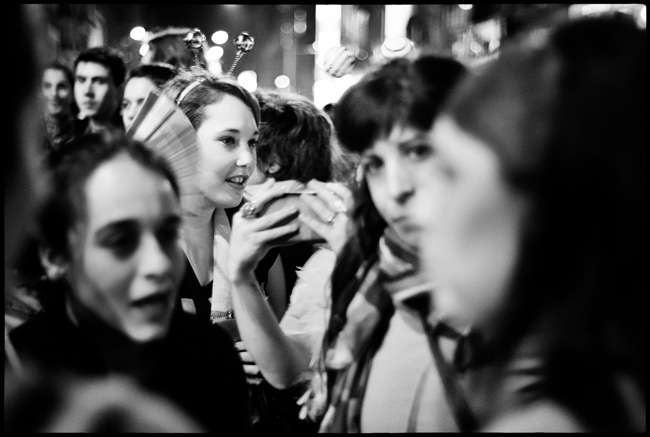
“Antennae” – Montevideo, Uruguay – September 2013 (Leica M8, Voigtlander Nokton 40mm 1.4)
Conclusion: The “M” experience
The “M” series embodies the archetypal street and reportage camera due to its size, looks, and overall discreet operation. Shooting an M is as much about the end results as it is about the journey – It pays homage to a rich tradition of humanist photography, to the legacy of the wanderer who shoots at street level and is able to find the beauty, the quirkiness, the humor out of fleeting moments of everyday life.
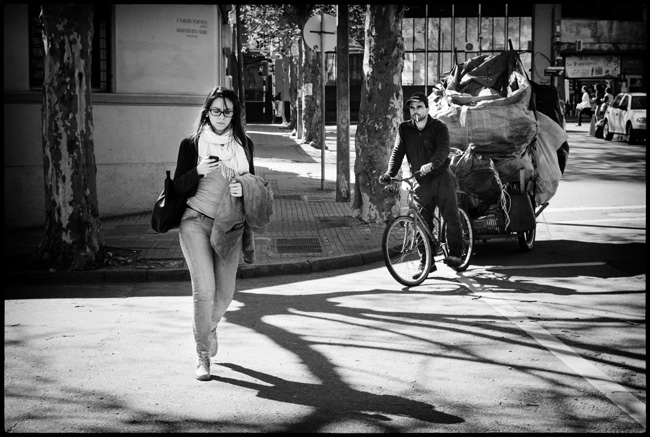
“Non Verbal Communications” – Montevideo, Uruguay – September 2013 (Leica M8, Summicron 35mm ASPH)
The Leica rangefinder is specialized tool, and as such, early on it imposes its character on the photographer. The simple, back to basics approach to photography, is a breath of fresh air in a photographic landscape dominated by cameras that feel more like computers than tools to express your vision. It requires being nurtured, learned, and practiced, but will reward those who are willing to embrace its limitations with a more intimate, natural connection with the photographic process.
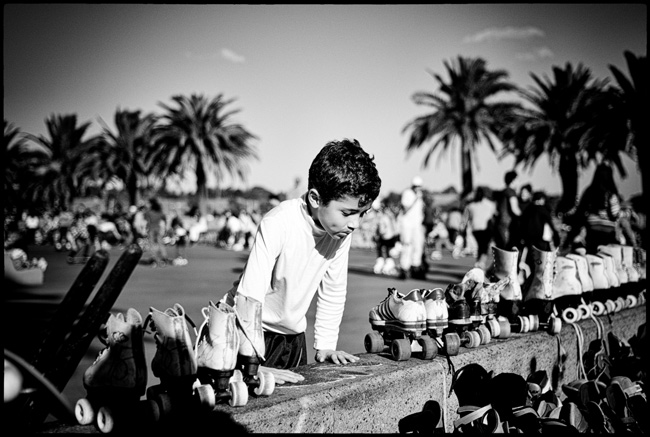
“Choices” – Montevideo, Uruguay – August 2013 (Leica M8, Summicron 35mm ASPH)
Shooting the “M” is about the satisfaction of mastering a fine precision tool, just like a musical instrument. It is about trusting ones instincts, discovering the fine balance between total control and the vertigo of chance and serendipity. Shooting a rangefinder is not a technical need, but rather a chosen experience.
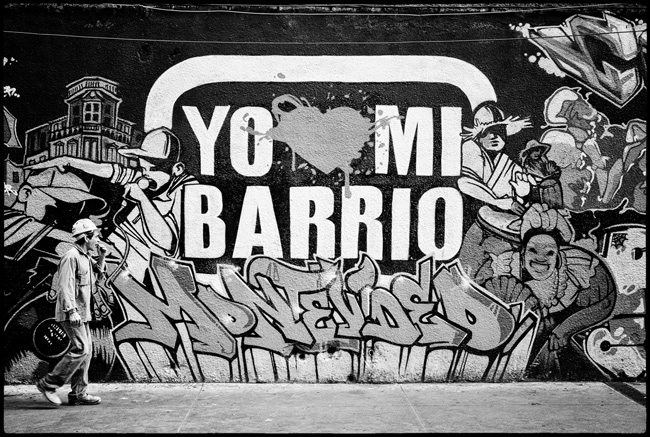
“I Love My Neighborhood” – Montevideo, Uruguay – September 2013 (Leica M8, Summicron 35mm ASPH)
About Nicolas Raddatz
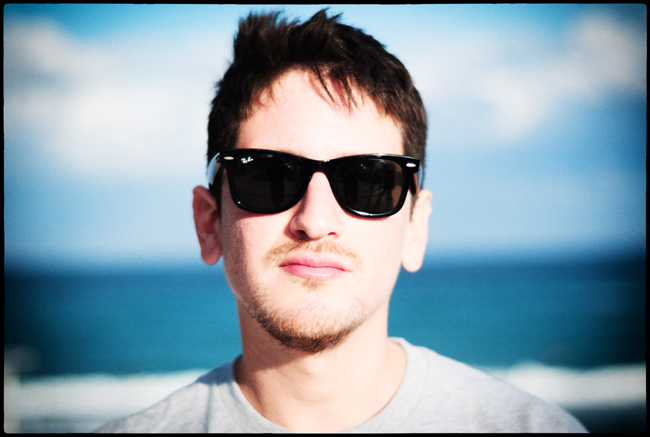
Born in Santiago, Chile in 1979, he lives in Uruguay since 1990. A software consultant by profession, he is also a photographer, as well as occassional musician. His main body of work is on street and documentary photography in Uruguay and Latin America. In 2010 he published his first photobook “La Ruta del Raid”, a visual investigation on the “Raid Hipico”, an equestrian sport intimately related to the culture and traditions of the Uruguayan countryside. In 2007 he obtained a honourable mention at the 8th Biennial of Video and New Media in Santiago de Chile. His work has been showcased in the most relevant art venues of Uruguay, as well as in the US, Chile, Greece and Venezuela.
You canemail Nicolasas well as visit hisFlickrsite andWeb Page
You May Also Enjoy...
An Interdependent World with Andrew Budziak
FacebookTweet This documentary looks at a poison program that is happening right in our backyard. At its core, this is a story about our relationship
